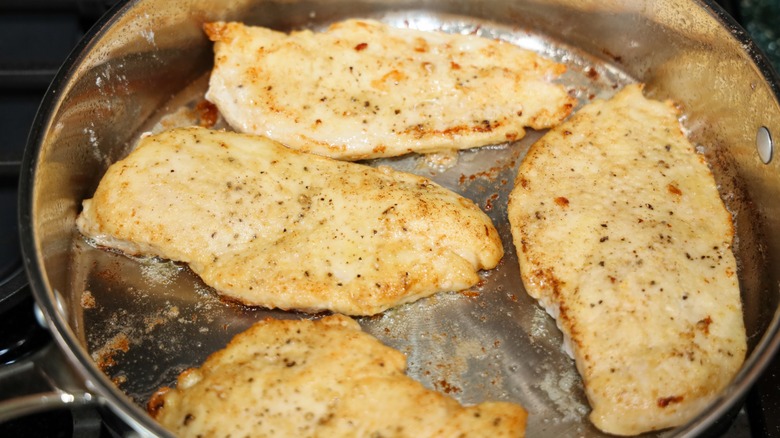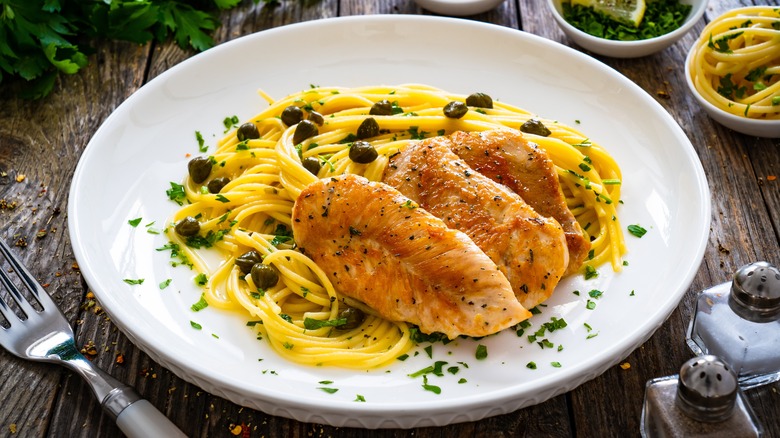Prevent Seared Chicken From Sticking To The Pan With A Light Dusting Of Flour
If you've ever come across a recipe that calls for dusting chicken in flour before cooking it in a pan, you might have wondered why. The flour doesn't create a batter, as in fried chicken, or even a particularly crisp coating like using egg and bread crumbs does — but that's the whole point. This light coating of flour allows the taste and texture of the chicken to shine through without the distraction of breading. The flour creates a dry surface so the chicken can brown in the pan, and as a bonus, some of the flour left in the pan does a great job thickening the pan juices for a quick sauce.
The cook's dilemma is that browning creates flavor, but for browning to happen the meat needs to be patted dry to avoid steaming. But dry meat sticks to metal pan surfaces, pulling off any browning that happens. Non-stick pans should not be heated empty, making them a bad choice for searing meat when you want to develop browning. That's where a coating of flour comes to the rescue — it allows the chicken to cook with minimal sticking by creating a layer of starch that keeps the protein off the metal surface of the pan.
Dredging chicken in flour for flavor
The kitchen term for this dusting of starch is dredging, and the technique works with a range of flours, including almond or coconut flours, gluten-free flour, and even cornstarch and potato starch. Dredging is a classic technique for recipes such as chicken piccata and delicately fried fish, and is also sometimes used when browning stew meats. The process is simple, but there are a few counterintuitive tips to remember. The flour should be a dusting, not a thick coat, so you'll want to pat the chicken dry before dipping the protein in the flour and then gently shaking off any excess. This is one time you shouldn't season the chicken with salt first because salt draws moisture to the surface, and you'd be patting it off. Just season the flour instead, or salt the dish after cooking.
Dredging in flour gives chicken a lovely even browning on the meat, without giving it a dominant coating. A real bonus is the bits of flour that stay in the pan and toast up a little more. With just a splash of wine or lemon juice, the pan juices combine with flour left in the pan to create an almost instant sauce. So don't skip this important step when you see it in a recipe, it's the key to great flavor and texture.

